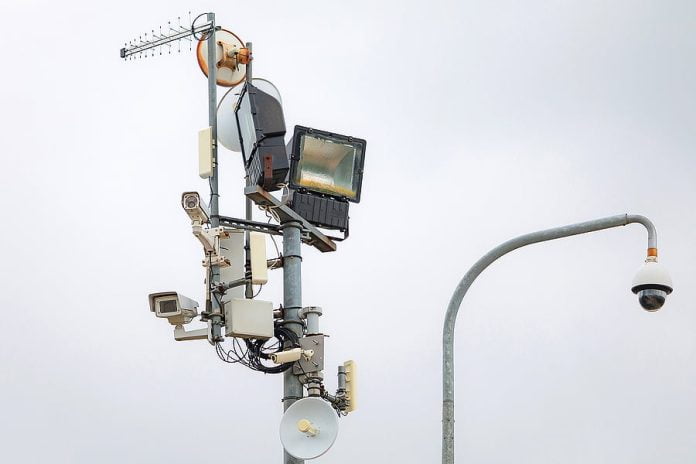When thinking about deterrent factor on any site, you have to think about lighting. Effective and well-planned external lighting systems are among the most important and least considered aspects of the overall security plan.
LIGHTING’S multipurpose function means it can be used as an economical form of security. But it’s important that when initially installed, lighting systems take into account security as part of their function. Every site requires some degree of external lighting. In its simplest form, this lighting may only illuminate the main entry and exit point, and the car park of a building.
Lighting should not only work to allow safe passage to and from a building after dark. It should also be designed to allow passers-by, police and security patrols to view each potential exit and entry point, including doors and windows. Lighting should allow a complete patrol circuit of a site without leaving areas of darkness in which intruders might hide.
CCTV systems should also be considered here. When the lighting system is designed, illumination should be positioned to allow quality video images without dark holes or blooming in a scene. You’ll be plagued by blooming when poorly placed security lights blind a surveillance camera.
Another important function of light is its use as an aggressive barrier that confronts and blinds potential intruders. Part of the strength of aggressive lighting is the feeling of being under surveillance it engenders in humans. No one likes being confronted with strong light that can’t be seen through. When used by onsite security patrols, strong light denies potential intruders the ability to view details of a site while at the same time, it allows patrol teams a clear view of approaches and dead ground around a facility.
Obviously, lighting systems can’t call the police, hinder a determined intruder or make an arrest. Light can only be effective if installed as part of a complete security system. But should lighting be installed properly in combination with effective fencing, CCTV and electronic detection systems, it offers economy, low maintenance, and capable support of protection systems over many years.
Science of Light
There are 5 security lighting techniques which together make up the effective security lighting system. First, there’s perimeter lighting, which entails illuminating a fence line, wall, boundary or approaches with lamps facing outwards to increase the blinding effect on intruders. Next is checkpoint lighting, which allows vehicles or pedestrians to be checked in full light. It can also be designed to allow security officers in a guard post to see out, while remaining hidden to the intruder.
The 3rd security lighting technique is defensive area lighting, which illuminates open spaces around buildings with lamps positioned on towers or placed high on building structures. Technique number 4 is defensive building floodlighting and involves floodlighting buildings so intruders can be seen clearly or in silhouette. The 5th lighting technique is topping up – single luminaries positioned in dark spots, like alleyways or dark entrances.
The first and most obvious part of the lighting plan must be to decide just what you are looking to achieve – what are you defending and from whom? Other considerations include the budget – but you need to consider the opportunity cost of what may seem a more expensive lighting solution in the short term and balance it against long-term benefits.
In doing this, the security manager has to take in account economy of operation, reduction in manpower patrols, drops in theft and vandalism and a possible fall in insurance costs. You’d also need to bear in mind that a good lighting system properly maintained should last 10 years or more before any major replacement is needed.
Having sorted out issues of budget, you need to consider the environment into which the lighting system will be installed. There are a large number of site-specific issues you’ll have to face. These will include things like building design, the objectives of the system, lighting design parameters, ease of installation and maintenance, safety, siting of lamp poles or towers, protection of lamps from vandalism and constraints of siting, and the aiming of strong lights that may impose on neighbouring residents or businesses.
Each lamp needs to be considered as a single unit and you need to deal with the basic lighting parameters your installation – what your system is required to achieve and what sort of illumination will meet these requirements. Things to take into account are general illuminance levels, the plane of measurement for general illuminance, limiting glare index for each area and uniformity of illumination for each area.
Other issues include the measured uniformity of illumination for each area, minimum measured illuminance requirements, requirements for colour appearance, and colour rendering. These latter issues are particularly important for applications in which video surveillance systems are to be supported. When putting together the contract for installation, be sure every contractor provides data that includes the total electrical load, including gear losses, and a power factor for the entire lighting system and its parts.
Installers also need to provide you with utilization and light loss factor employed in calculations for each area, including the proposed frequencies for cleaning and re-lamping, while outlining what equipment will be suitable for your environment. Then there’s the 10-year cost of the installation – get this valued at present costs.
#sen.news











